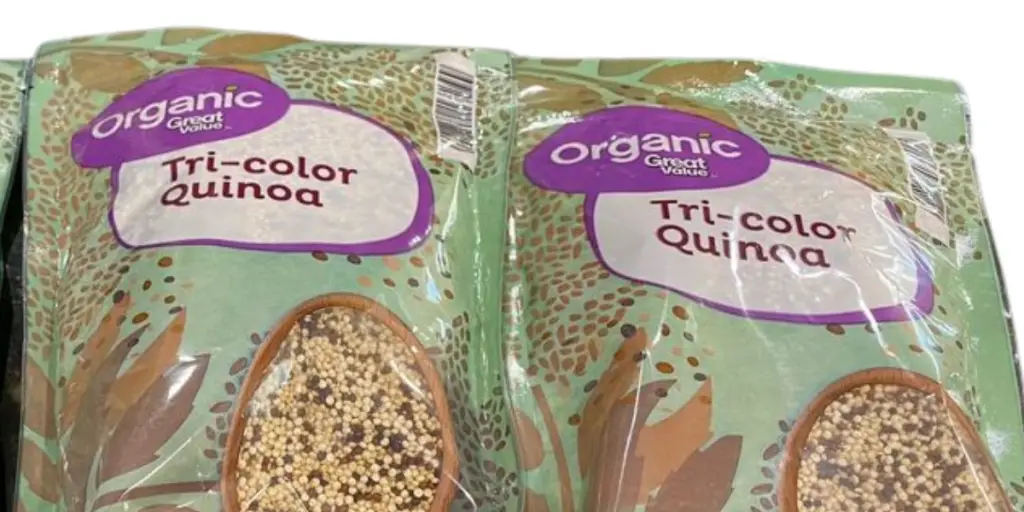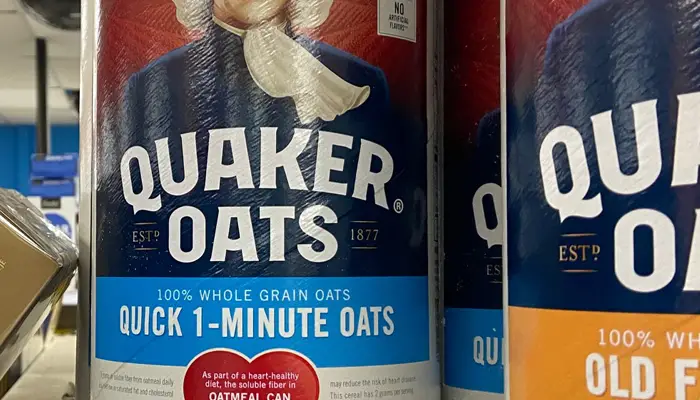Also known as rolled oats. According to British food authority Alan Davidson, “…it is commonly held that the disproportionately large measure of success and fame achieved by Scottish people on the world stage is partly or even primarily the result of a diet including oatmeal, especially porridge.”
Oats are one of the few grains typically eaten whole. The groats, or hulled kernels, are simply flattened by heavy rollers and steamed in rolled oats. They retain their total nutritional value; the inedible husk is removed, but the bran and germ remain. Below are our favorite oatmeal substitutes you can try.
Contents
1. Steel-cut Oats
Steel-cut oats are the less refined version of the old-fashioned rolled oats, and all oats start the same as an oat groat.
Steel-cut oats are groats sliced into smaller pieces compared to rolled oats. Steel-cut oats take longer to cook, and they tend to be chewier and more flavorful.
Oats lower bad cholesterol, help stabilize blood sugar levels, and on and on.
Scotch oats are whole oat groats ground into a coarsely ground meal similar to cornmeal. When cooked, they are like porridge.
Steel-cut oats are a type of oat that is cut into small pieces, rather than just rolled or flaked. This makes them chewier and heartier than the other types of oats.
They have a nuttier flavor than the more processed varieties, but they can also be bland if they aren’t cooked correctly.
Steel-cut oat substitutes are great in soups and stews, and they’re often used in savory dishes like Irish oatmeal stew. But they can also be made into sweet dishes like cookies, granola bars and breakfast cereal!
= 1 cup steel-cut, Irish or Scotch oats
2. Oat Groats
Oats are called groats, the de-hulled oat grain, while other grains are called berries. Groats include the cereal germ, the bran, and the grain’s endosperm.
Groats are milled to remove the outer husk and are the most intact form of the grain. They are packed with dietary fiber. They are highly nutritious, are larger pieces, and take much longer to cook, although they are much chewier.
If you’re looking for a tasty, nutritious way to start your day, Oat Groats are for you. These little grains are high in fiber and rich in nutrients like magnesium, manganese, and iron. They also have a rich nutty taste that can be enjoyed on its own or as an addition to your favorite recipes.
Oat groats are an excellent source of whole grain nutrition and are often used as an ingredient in breakfast cereals, hot cereals and granolas. They can also be cooked like rice or other grains, making them an easy way to add whole grain goodness to any meal!
= 1 cup oat groats is a substitute for 1 cup rolled oats
3. Quinoa
Quinoa is a flowering plant in the amaranth family with edible seeds rich in protein, fiber, B vitamins, and minerals. It offers a nutty taste and is easy to make. Simmer quinoa with almond or coconut milk until fully cooked.
Quinoa is a grain-like food that is high in fiber and protein. It’s also gluten-free and vegan, making it a great option for people who follow a plant-based diet or have a gluten sensitivity.
You can substitute quinoa in place of rice, couscous, or pasta to add more nutrients to your meals. It has a slightly nutty flavor and cooks up fluffy like rice or couscous when cooked. You can also choose to prepare it as a side dish similar to the way you would cook bulgur wheat or barley—it adds great texture to salads when you make it ahead of time!
Quinoa has become popular in recent years because of its health benefits: it’s high in fiber and protein with all nine essential amino acids (including lysine), as well as magnesium, iron, phosphorus, copper, zinc and manganese.
= 1 cup quinoa is an alternative to 1 cup rolled oats

4. Barley
Barley came from the area of modern-day Jordan and Israel and is believed to be a food source from at least 10,000 years ago. Barley is usually “pearled” or “hulled,” referring to how the grain is processed.
Barley is a grain that comes from a certain type of grass. The grain has been cultivated since the Bronze Age and has been an important part of human diet ever since.
Barley has a nutty, slightly sweet taste and a chewy texture that makes it perfect for soups and stews. Barley can also be used in loaves to make breads, or as an ingredient in beer making.
Barley is grown all over the world, but it originates from the Fertile Crescent region of southeast Turkey where it was first domesticated about 12,000 years ago by ancient farmers who bred wild strains into modern varieties with higher yields, disease resistance and better taste qualities than wild varieties had before domestication began around 10,000 years ago.
= 1 cup barley flakes (rolled barley) is a replacement for 1 cup rolled oats
5. Millet
Widely grown as a cereal crop, millet is a small-seeded grass. Millet is rich in vitamins and minerals such as phosphorus, magnesium, and folate; millet may be the most nutritious substitute for oatmeal.
Millet is a grain that’s been used for centuries in Eastern and Southern Africa, as well as in South Asia, China and Japan. It’s also an ingredient in many traditional dishes, including falafel and the traditional Moroccan dish couscous.
Millet has a slightly sweet taste with notes of nuts and honey, but it also has a bit of a nutty flavor to it as well. It’s a great substitute for rice or quinoa in dishes where you want something that has more texture than your average grain.
= 1 cup millet substitutes for 1 cup rolled oats
6. Buckwheat
Buckwheat is a plant with grain-like seeds that, when harvested, have groats that boast a large amount of fiber, along with vitamins and minerals like potassium, phosphorus, and magnesium.
It’s also known as “beech wheat,” “kasha,” and “kashkaval.” Buckwheat is not related to wheat at all—it’s actually more closely related to sorrel and rhubarb!
Buckwheat has a unique flavor that can be described as nutty, earthy and bitter. It’s also incredibly versatile—it’s used in many traditional dishes from countries all over the world. In Japan it’s used for soba noodles; in Italy it’s used for pastas like gnocchi and risotto; in Russia it’s used in crepes; in Germany it’s added to breads and pancakes; and in Ethiopia it’s made into injera bread!
= 1 cup buckwheat is equal to 1 cup rolled oats

FAQ
What are healthy alternatives to oatmeal?
Quinoa and millet are healthy alternatives to oatmeal. Steel-cut oats are a version of the oat, just not as refined as rolled oats.
What can I use instead of oatmeal in a recipe?
To replace oatmeal in a recipe, try equal measures of quinoa, buckwheat, millet, or steel-cut oats.